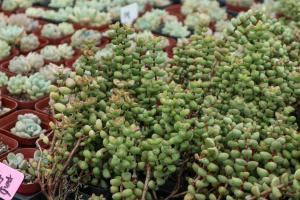Do You Need to Seal Terracotta Pots Before Planting?
Terracotta pots are a popular choice for planting because of their unique, rustic look and their porosity, which allows for proper moisture and air circulation for your plants. However, many gardeners wonder whether they should seal their terracotta pots before planting. Here, we’ll discuss the pros and cons of sealing terracotta pots and whether it’s necessary for successful planting.
Pros of Sealing Terracotta Pots
One of the benefits of sealing your terracotta pots is that it helps to prevent moisture from escaping through the porous clay walls. This can be especially useful if you live in a dry, arid climate or if you have plants that require more moisture than others. Sealing terracotta pots can also help to prevent staining on delicate surfaces, as well as reduce the risk of cracking and chipping, which can occur over time.
Cons of Sealing Terracotta Pots
On the other hand, there are some downsides to sealing your terracotta pots. The main issue is that sealing the pots can prevent air and moisture from moving in and out, which can lead to problems with root rot or other fungal infections, as well as poor drainage. In addition, sealing the pots can make it more difficult to detect when the soil is becoming too wet or dry, which can be detrimental to the health of your plants.
When to Seal Terracotta Pots
If you do decide to seal your terracotta pots, it’s important to do so before planting to ensure that the sealant has time to dry and cure completely. It’s also best to seal only the outside of the pot, rather than the inside or bottom, to allow for proper drainage and air circulation. Keep in mind that sealing your pots may not be necessary for all types of plants and environments, so it’s always a good idea to do some research and ask for advice from a garden professional before making any decisions.
Alternatives to Sealing Terracotta Pots
If you’re still unsure about whether to seal your terracotta pots, there are some alternative options that you can consider. For example, you can line the inside of the pot with a plastic or metal insert, which can help to prevent moisture from escaping while still allowing for proper drainage and air circulation. Another option is to use a clay pot saucer or tray, which can catch excess water and prevent staining on delicate surfaces.
In Conclusion
While sealing terracotta pots is not always necessary, it can be useful in certain situations, such as in dry climates or for plants that require more moisture. However, it’s important to keep in mind that sealing the pots can also lead to issues with root rot, poor drainage, and difficulty monitoring soil moisture. If you’re unsure about whether to seal your pots or not, it’s always a good idea to do some research and consult with a gardening professional for advice and guidance.

 how many times do yo...
how many times do yo... how many planted tre...
how many planted tre... how many pine trees ...
how many pine trees ... how many pecan trees...
how many pecan trees... how many plants comp...
how many plants comp... how many plants can ...
how many plants can ... how many plants and ...
how many plants and ... how many pepper plan...
how many pepper plan...































